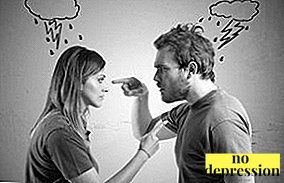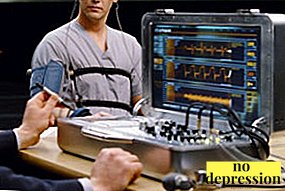What is claustrophobia? In a broad sense, claustrophobia is fear of confined spaces. Phobia can occur with varying degrees of intensity and occur at any age.
The causes of the phobic state are ascertained using a special psychotherapeutic examination, but in some cases their determination causes difficulties.
Treatment of the disease is carried out comprehensively. The main method of therapy is to use psychological and psychotherapeutic techniques. If there is a serious mental damage, a course of taking medications that normalize the person's psycho-emotional background is necessary.
The concept and characteristics

Claustrophobia called irrational fear of a closed, narrow or cramped space.
Pathology is among the spatial phobias and can be combined with their other forms.
Young women are at particular risk. Phobia develops against the background of psycho-emotional turmoil and may occur after a long period of time after the experienced situations.
The symptoms of claustrophobia include certain psychological and physical symptoms. Fear of enclosed spaces in a slight degree manifests itself in the form of anxiety, in severe cases - accompanied by panic attack.
What is claustrophobia? ABOUT symptoms and manifestations in the video:
Fear of enclosed space - causes
Main cause claustrophobia is considered a psycho-emotional trauma. People who have suffered tragedies associated with closed spaces, such as fires, floods, acts of terrorism, etc., are prone to this type of phobia.
Psychological traumas occurring in childhood can increase the risk of developing a phobic state. For example, if parents, as a punishment, lock babies in rooms, put them in dark corners or ignore the fear of the dark in a child.
Possible causes phobias are the following factors:
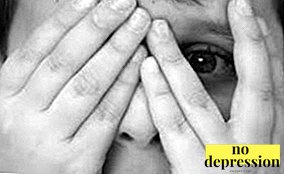 experienced traumatic situations in childhood;
experienced traumatic situations in childhood;- pathology of the cardiovascular system (phobia occurs against the background of the fear of death);
- the presence of neurological diseases or mental disorders;
- a tendency to depression (weakness of the nervous system);
- malfunction of certain parts of the brain;
- excessive susceptibility (as a character trait);
- critical hormonal disruptions (provoke mental disorders);
- diminished amygdala (disturbed control of reactions during fear);
- genetic predisposition.
Varieties of phobias
Fear of confined spaces can arise for various reasons. During an attack of claustrophobia, the patient may experience fear of death, darkness or other factors.
Phobia is manifested in a mild or accompanied by complications. In the first case, the claustrophobic experience discomfort. while staying indoors and tries to leave them faster.
In severe forms, even tight clothing or a tie can provoke an attack.
Claustrophobia may be accompanied the following types of phobias:
- fear of death (thanatophobia);
- fear of depth (bathophobia);
- fear of the dark (niktofobiya);
- fear of heights (acrophobia).
How does it manifest itself?

Fear of confined space can manifest itself not only when finding in small rooms, but also in the train compartment, the car.
It is difficult for claustrophobes to undergo a medical examination involving the use of devices that limit personal space (for example, during an MRI scan).
Symptoms of phobias are accompanied an overwhelming sense of fearmanifested in the form of anxiety, panic attacks and loss of control over their behavior.
When in a potentially dangerous situation, the following occur. the symptoms:
- fear of lack of oxygen;
- fear of death or physical injury;
- a feeling of complete restraint;
- tremor and numbness of the limbs;
- increased sweating and chills;
- choking and coughing attacks;
- heart palpitations and breathing;
- pain in the chest;
- high blood pressure;
- "Ringing" in the ears and dizziness;
- nausea or vomiting attack;
- burning in the neck and face;
- reduced secretion of salivary glands;
- general weakness of the body and fainting;
- sudden urge to urinate;
- feeling of stupor and loss of body control.
Features of fear in children

Children's claustrophobia has some peculiarities.
This age category is different. excessive sensitivity of the psyche.
Not only strong emotional upheavals, but also random situations can provoke the development of phobias.
In some cases, the fear of the parents becomes the cause of claustrophobia. If an adult person imposes his fears on a small child, then the phobic state will develop at a rapid pace.
Claustrophobia in childhood has the following features:
- Penalties and improper behavior of parents can provoke a phobia.
- The risk of developing persistent mental disorders on the background of phobias in children is at the highest possible level.
- In childhood claustrophobia is better treatable (if symptoms of phobias are detected, they should not be ignored in any way).
Treatment claustrophobia in children:
How to stop a panic attack?
During an attack of claustrophobia persistent concentration on a certain fear. It is recommended that patients themselves and those who are with them in such moments should do everything possible so that potentially dangerous objects are eliminated as quickly as possible in the subconscious of claustrophobia.
Patients can independently cope with bouts of phobias in the presence of a mild phobic state.
With complications or concomitant mental disorders, there is no control over the emotions and behavior of the claustrophobes (they will not be able to stop the attack without help).
Actions during claustrophobia:
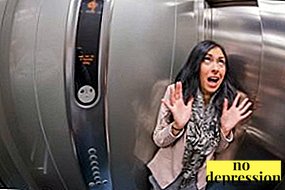 A person must be embraced or taken by hand (a feeling of protection will reduce the feeling of fear).
A person must be embraced or taken by hand (a feeling of protection will reduce the feeling of fear).- Tight clothes should be unbuttoned (if there are scarves or ties around the neck, they should be removed).
- It is necessary to ask a person to think about abstract topics or to transfer his pacifying situation with a story.
- Music or singing (if there is the possibility of including quiet music, then it must be used, as an alternative, you can use singing).
- Breathing exercises (if you normalize breathing, then an attack of claustrophobia stops at an accelerated rate).
Treatment
How to cure claustrophobia? Claustrophobia therapy is carried out comprehensively. The course of treatment involves the use of special psychotherapeutic techniques and medications, which are aimed at strengthening the nervous system and normalizing the psycho-emotional state.
The main task of specialists is to teach the patient how to self-monitor and eliminate unreasonable fears.
Therapeutic methods are selected individually and depend on the overall clinical picture of the claustrophobic health status.
Preparations
The course of drug therapy for claustrophobia is made individually. If you have persistent mental disorders, you must use potent drugs.
 They must be taken under the supervision of a specialist. Drug therapy should be carried out in conjunction with psychotherapy, the main treatment for claustrophobia.
They must be taken under the supervision of a specialist. Drug therapy should be carried out in conjunction with psychotherapy, the main treatment for claustrophobia.
In the treatment of claustrophobia, the following may be used. drugs and tablets:
- tranquilizers (Phenazepam, Diazepam);
- tricyclic antidepressants (imipramine);
- beta-blockers (atenolol, propranolol).
Psychological help
How to overcome a phobia? Psychotherapy is main method claustrophobia treatment.
In psychotherapeutic practice, many methods of dealing with phobias have been developed, each of which has a certain principle of action.
Selection of specific methods of claustrophobia elimination is carried out by a specialist on the basis of the collected history. With a mild phobia, it may be enough to use one of the methods, if complications - Therapy is carried out in a complex.
Psychological treatments for claustrophobia:
- Cognitive-behavioral methods of exposure (a specialist identifies pathological patterns of thinking, learning self-control and arresting unfounded fears).
- Relaxation and breathing exercises (training in breathing control and muscle has a beneficial effect on the nervous system, at the time of the attack the patient will be able to get rid of the panic attack).
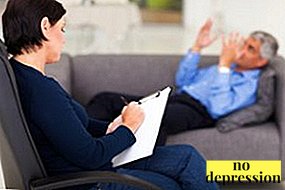 Classic psychoanalysis (individual sessions with a psychologist or psychotherapist, the main purpose of which is to identify the causes of claustrophobia and arrest an inadequate response to the occurrence of potentially dangerous situations).
Classic psychoanalysis (individual sessions with a psychologist or psychotherapist, the main purpose of which is to identify the causes of claustrophobia and arrest an inadequate response to the occurrence of potentially dangerous situations).- Neuro-linguistic programming (procedures are carried out with the help of pictures (photos) or texts affecting the subconscious).
- Desensitization therapy method (learning relaxation techniques that help eliminate fear and prevent panic attacks).
- Hypnosis (the technique is one of the most effective ways of treating phobias, during the sessions the main influence is on the patient’s subconscious, in most cases ten sessions are enough to completely eliminate claustrophobia).
How to deal with claustrophobia? Fear of enclosed space - advice of a psychologist:
Exercise yourself
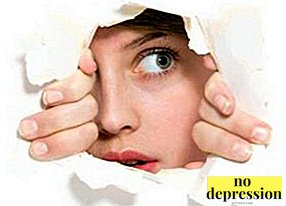
In most cases, self-winning claustrophobia becomes impossible.
This type of phobic condition implies mandatory psychotherapeutic correction.
Favorable projections self-medication is possible if there is a mild phobia. Recognize the tendency to fear of confined spaces can be on sudden attacks of anxiety that occur when in closed visits.
If you lose control over your behavior and emotions, you should immediately contact the experts.
Exercise examplesthat can be done independently:
- When you are indoors, you should try to think about abstract topics (mentally imagine the sea, sky, or remember the fun moments of life).
- It is necessary to try to take with you devices that reproduce music (at the time of an attack or at its first symptoms, pleasant music will help to relax and distract).
- Training of the emotional state (it is necessary to arrange short-term and regular “shock” therapy, purposefully placing yourself in confined spaces for a few seconds, gradually the duration of the specific sessions should be increased).
- Training of muscles and breathing (mastering techniques of relaxation and breathing exercises will help not only to cope with attacks faster, but also to prevent their occurrence).
How to live with a problem?
Claustrophobia to a large extent changes the quality of life. People with such a phobia constantly try to avoid traumatic situations (walking, avoiding travel in public transport, elevators).
In some cases, it becomes difficult to prevent such situations, and a panic attack becomes inevitable.
For the prevention of sudden panic attacks, you can use special recommendations, but the best solution to the problem would be to contact a psychotherapist or psychologist in a timely manner.
For prevention of claustrophobia You can use the following methods:
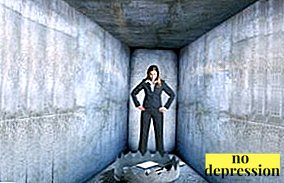 course taking sedatives and homeopathic medicines (motherwort tincture, Valerian extract, Persen, Glycine);
course taking sedatives and homeopathic medicines (motherwort tincture, Valerian extract, Persen, Glycine);- regular exercise and breathing exercises (you can sign up for fitness, dancing, yoga or other activities that strengthen muscles and have a beneficial effect on the nervous system);
- Observance of sleep and wakefulness (nervous or physical exhaustion can adversely affect the psycho-emotional state, causing the progression of the phobia).
Claustrophobia is not among the incurable pathological conditions. The key role is played by the timeliness of identifying phobias and the usefulness of therapy.
In most cases, projections for such a phobic state are favorable. Complicated mental illness or the presence of several phobias in a patient at a time may impede the treatment.
How to get rid from claustrophobia? Find out from the video:

 experienced traumatic situations in childhood;
experienced traumatic situations in childhood; A person must be embraced or taken by hand (a feeling of protection will reduce the feeling of fear).
A person must be embraced or taken by hand (a feeling of protection will reduce the feeling of fear). Classic psychoanalysis (individual sessions with a psychologist or psychotherapist, the main purpose of which is to identify the causes of claustrophobia and arrest an inadequate response to the occurrence of potentially dangerous situations).
Classic psychoanalysis (individual sessions with a psychologist or psychotherapist, the main purpose of which is to identify the causes of claustrophobia and arrest an inadequate response to the occurrence of potentially dangerous situations). course taking sedatives and homeopathic medicines (motherwort tincture, Valerian extract, Persen, Glycine);
course taking sedatives and homeopathic medicines (motherwort tincture, Valerian extract, Persen, Glycine);